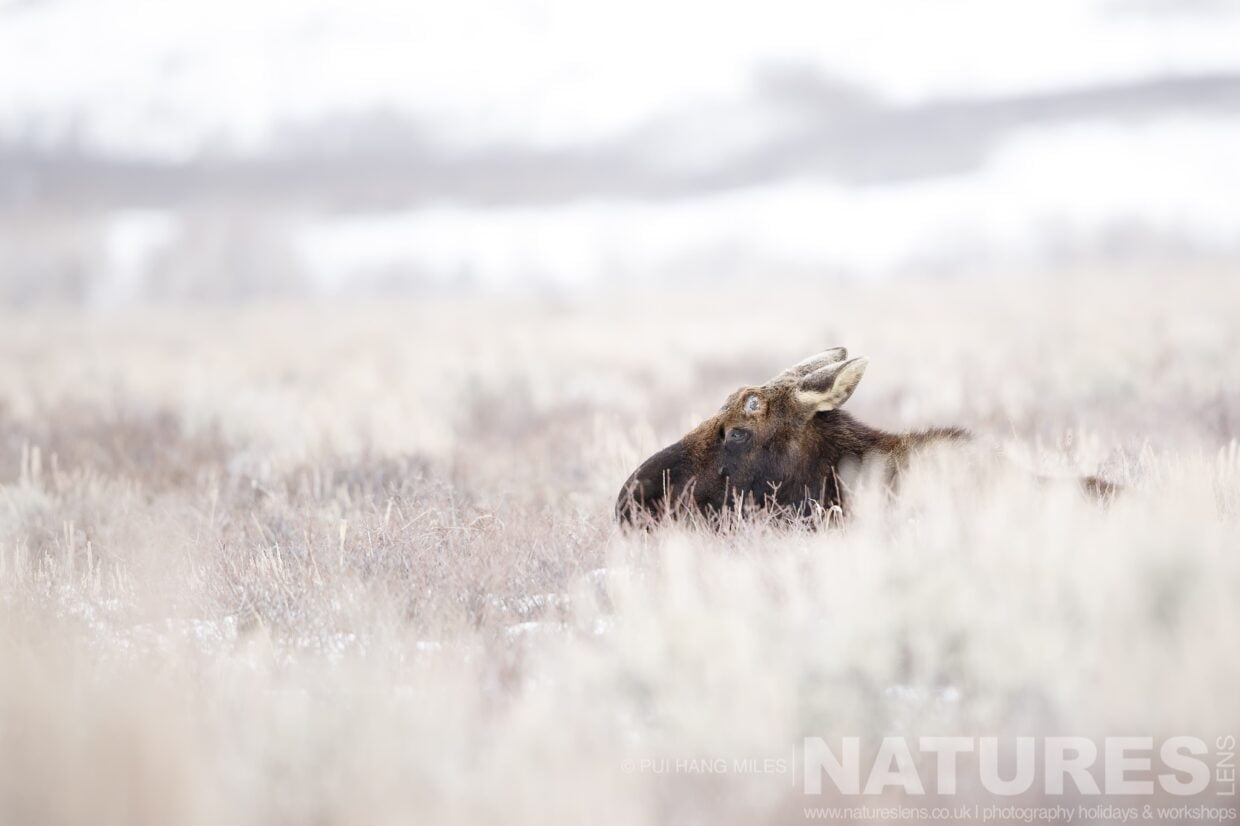From the snow-capped mountains to the vivid geysers to the unique Yellowstone wildlife in Winter, Yellowstone National Park & the Lamar Valley offer an incredible experience to all visitors. But there is something genuinely magical & special about the region during the Winter that makes Yellowstone National Park an unforgettable experience. The splendour of Yellowstone National Park during the colder months of Fall & Winter is a sight to behold. From the majestic wolves & bears to the massive bison & elk, the diverse wildlife is an unforgettable experience that draws visitors from far & wide. Located at the centre of a mountain range, surrounded by dense forests, Yellowstone provides a wealth of distinct habitats & ecosystems that support numerous wildlife species. It is an undeniable fact that Winter is the ideal time to observe these creatures in their natural habitat. To observe Yellowstone wildlife in their natural environment is an unparalleled experience. Bison & elk graze in the open meadows, predators like wolves & bears patrol the forests & come out to hunt, & various birds perch atop the trees. Winter is one of the best times to experience some of the wildlife of Yellowstone National Park!
Where is Yellowstone National Park?
Nestled in the northwest corner of Wyoming, Yellowstone National Park was established in 1872 & is America's first national park. The park spans 3,500 square miles, extending into Montana & Idaho, & is home to many exciting wildlife species. It's primarily known for its grand, natural beauty, & home to hundreds of species of mammals, birds, fish, & reptiles. Its expansive landscape is mainly covered in forests & grasslands, with most of its topography composed of mountain ranges & canyons. Not only is it one of the most visited national parks in the country, but it is a place of history & heritage, containing some of the oldest geothermal features in the world. To truly appreciate Yellowstone's natural wonders, visitors must understand the fascinating wildlife that calls it home in the winter months.
Why is Yellowstone so special during the Winter?
Visiting Yellowstone in the Winter offers many unique experiences that cannot be found in any other season. The wildlife population is much lower than in the summer, but there are still plenty of opportunities to observe & observe the animals of the park. Wolves, bison, & elk are apparent during the winter months as they gather around water sources & seek shelter from the snow & cold.
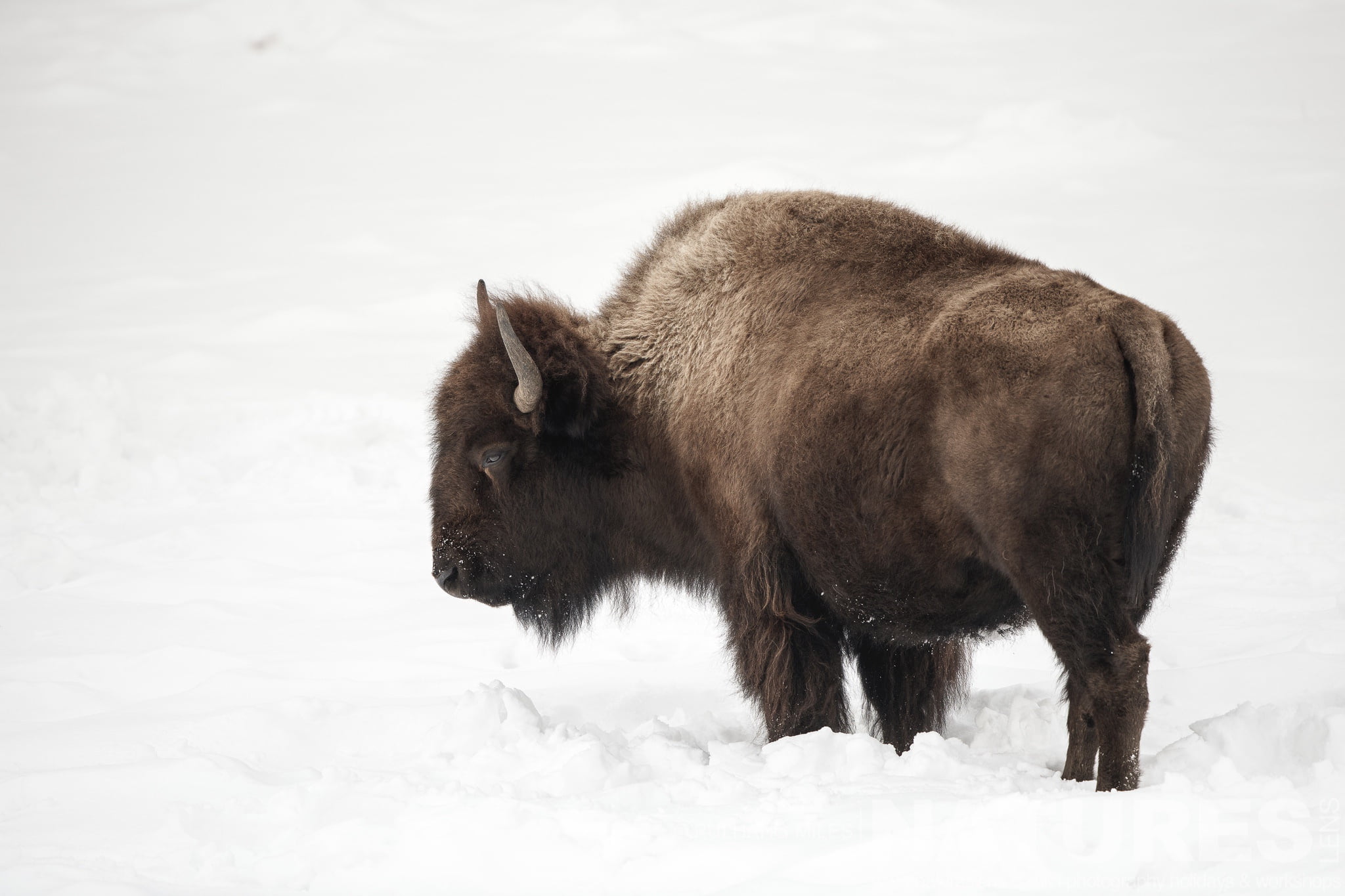
The starkness of the snow-covered landscape provides a truly magical experience. If you're lucky, you might even glimpse the majestic bald eagles that fly in to hunt for food. Bighorn Sheep are also occasionally spotted during the Winter as they migrate through the rugged terrain.
The abundance of snow in Yellowstone during the Winter also brings a unique opportunity to view the park from a different perspective. Visitors can take a snow coach, snowshoe or ski through parts of the park that are not accessible during the warmer months, taking in the sights & sounds of nature in a calm & peaceful environment.
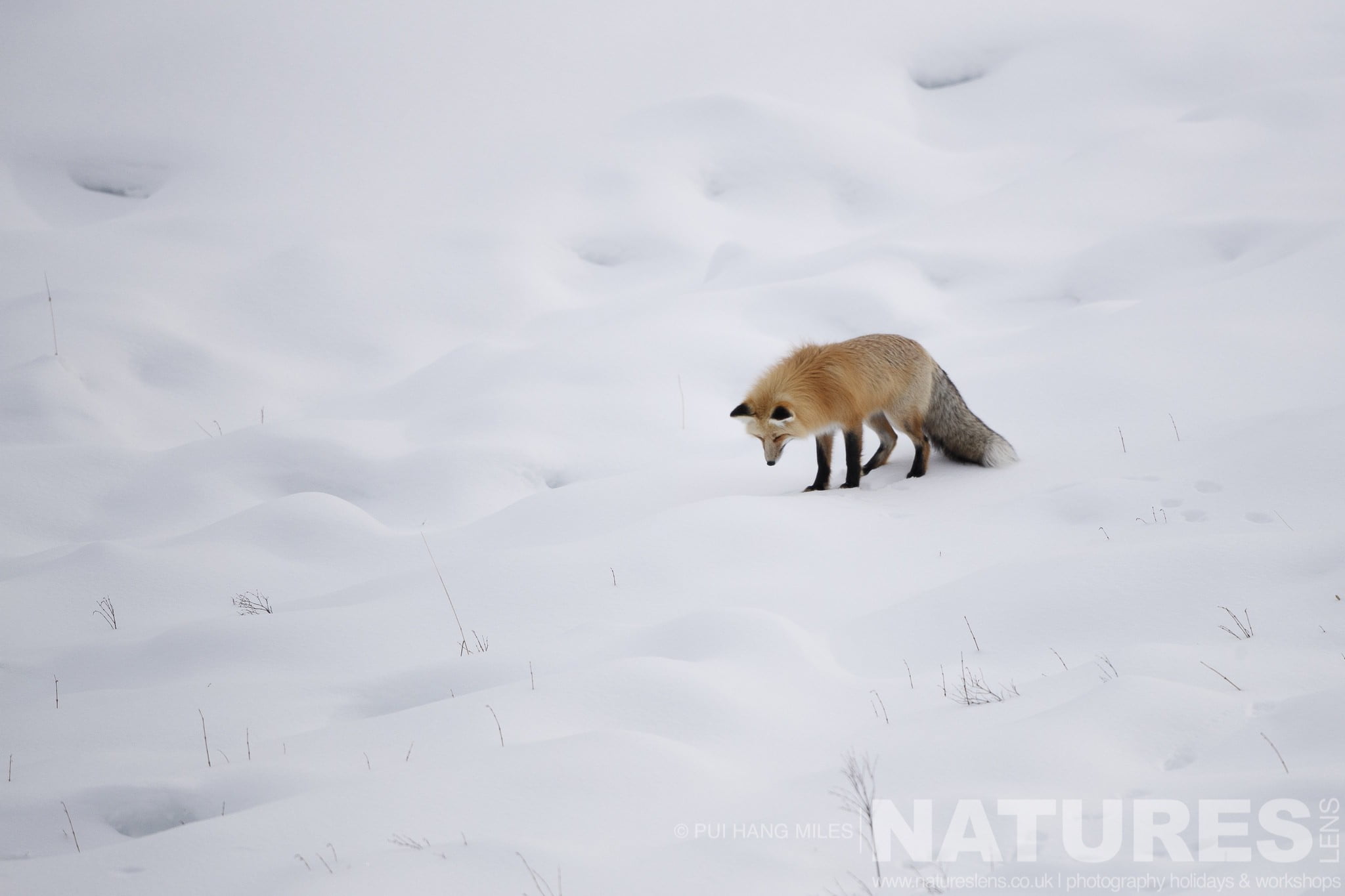
Additionally, the Winter brings some of the most spectacular sunrises & sunsets, which are not to be missed. From the summit of Mount Washburn, the fantastic views of the distant mountains blanketed in snow are breathtaking.
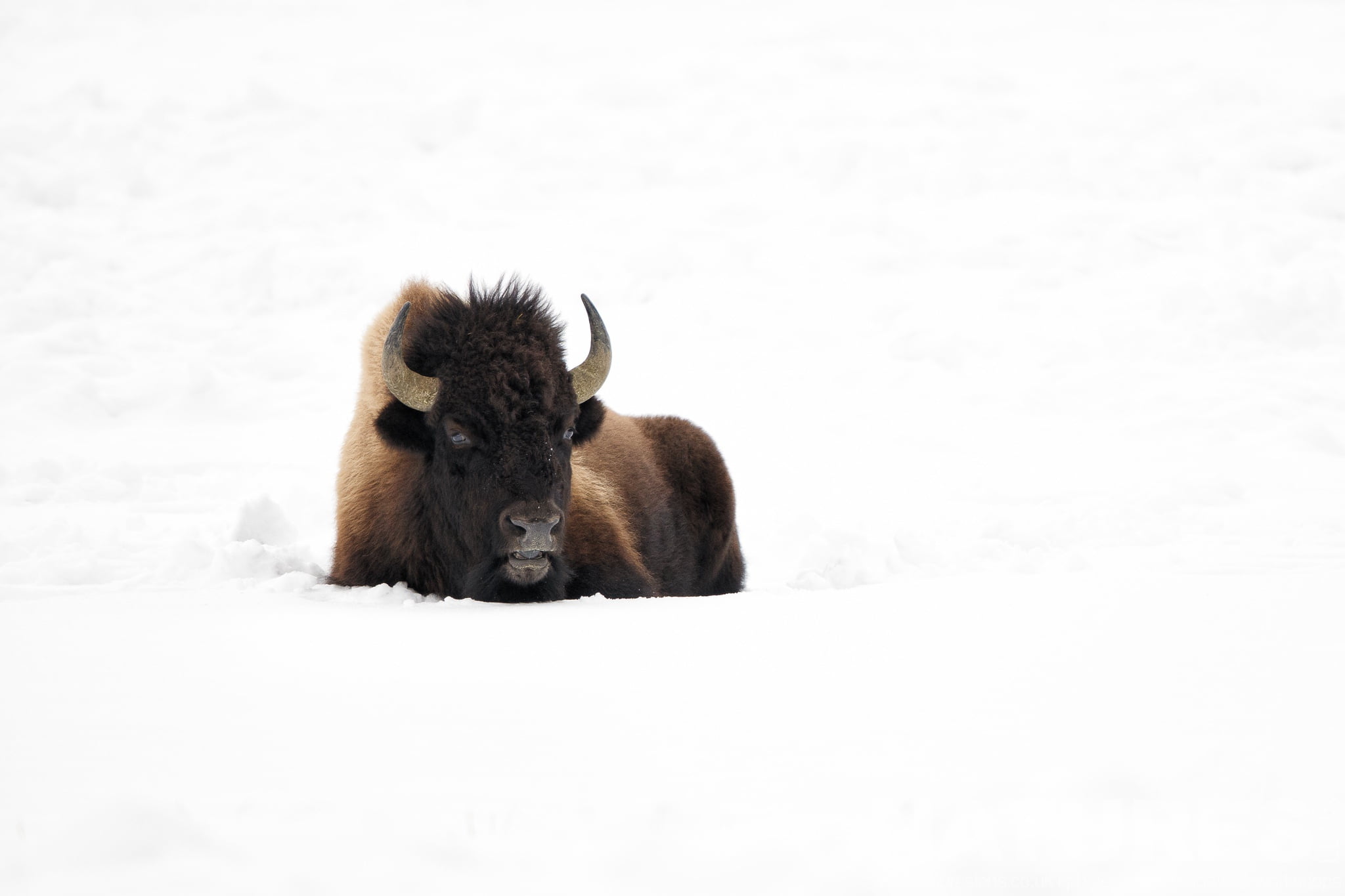
Finally, some of the most beloved park features, such as Old Faithful & Grand Prismatic Spring are still accessible during the Winter, offering visitors an unforgettable experience. With so much to see & explore, Yellowstone in the Winter makes for a remarkable outing.
What is the best month to see wildlife in Yellowstone?
January & February are some of the best winter months to see animals in Yellowstone. During this time, wolves & coyotes patrol the Lamar Valley in search of prey while bison, elk, & moose move slowly across the snowy plains. Further afield, bighorn sheep, mountain goats, & mule deer are often seen in the Absaroka Mountains, which form the eastern boundary of Yellowstone National Park.
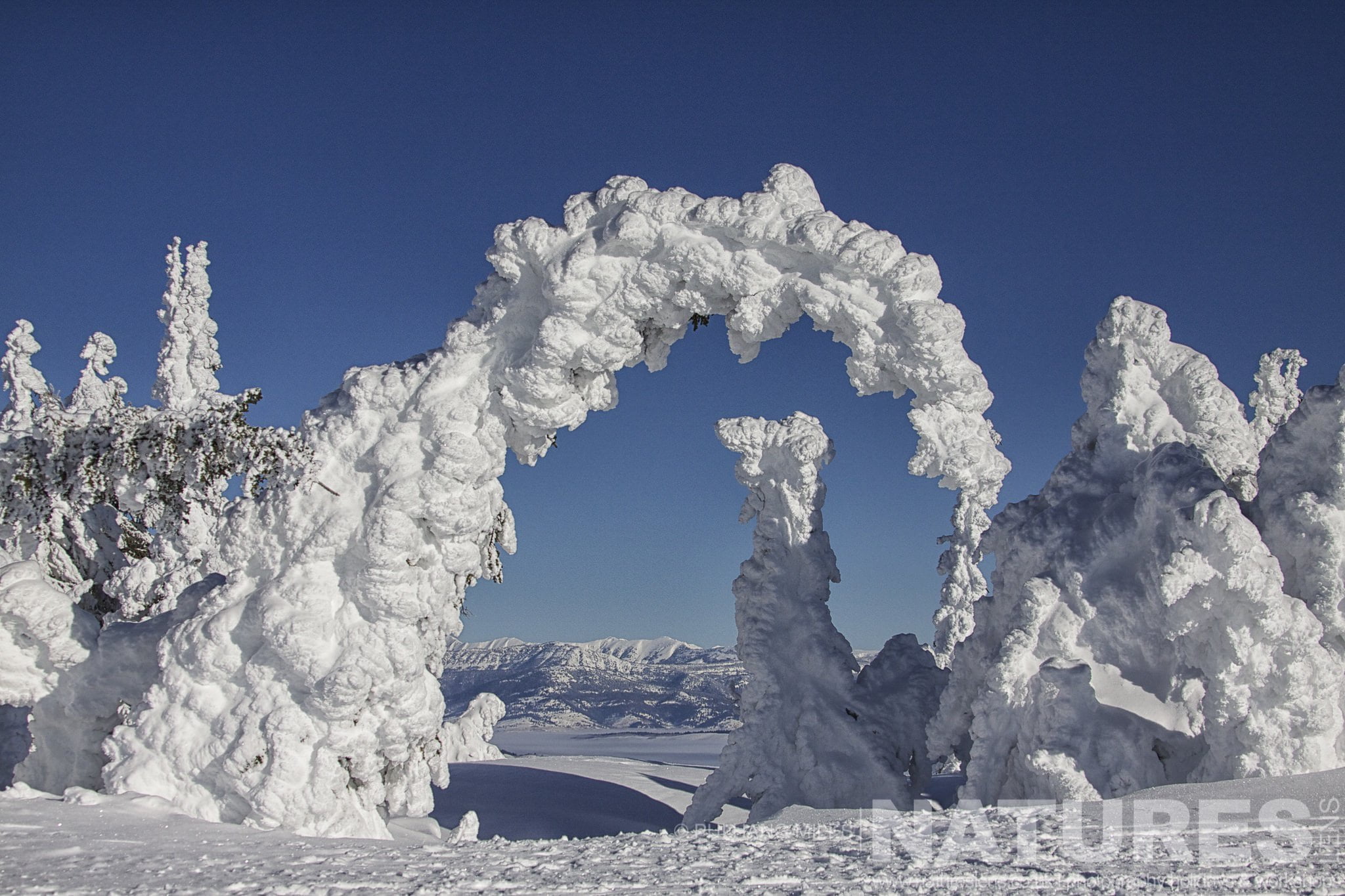
March marks the beginning of the calving season for many of the animals of Yellowstone, so expect to see plenty of young wildlife during this time. Bison, elk, & bighorn sheep all give birth in late spring, & the babies can be spotted following their mothers across the snow-covered landscape. Coyotes, foxes, & other small mammals like snowshoe hares, red squirrels, & pine martens can also be seen during this time.
What is it like to visit Yellowstone National Park in the Winter?
Visiting Yellowstone National Park in the Winter should be an exciting adventure. The landscape is draped in a white blanket of snow, breathtakingly beautiful. The wildlife adapts to the harsh conditions & presents numerous opportunities to spot various species. But what exactly is it like to visit Yellowstone in Winter?
A visit during Winter is a time which can be unpredictable & it is essential to be prepared for the elements. Temperatures usually drop below -10 degrees Celsius by night & can also stay there during the day. Even during the day, snowfall is common & thick clothing layers are essential.

Despite the extreme weather conditions, there are many advantages to taking a Yellowstone safari in Winter. The landscapes are picture-perfect & there is no better way to experience the park's grandeur than by taking in the views of snow-covered peaks, frozen rivers & majestic waterfalls.
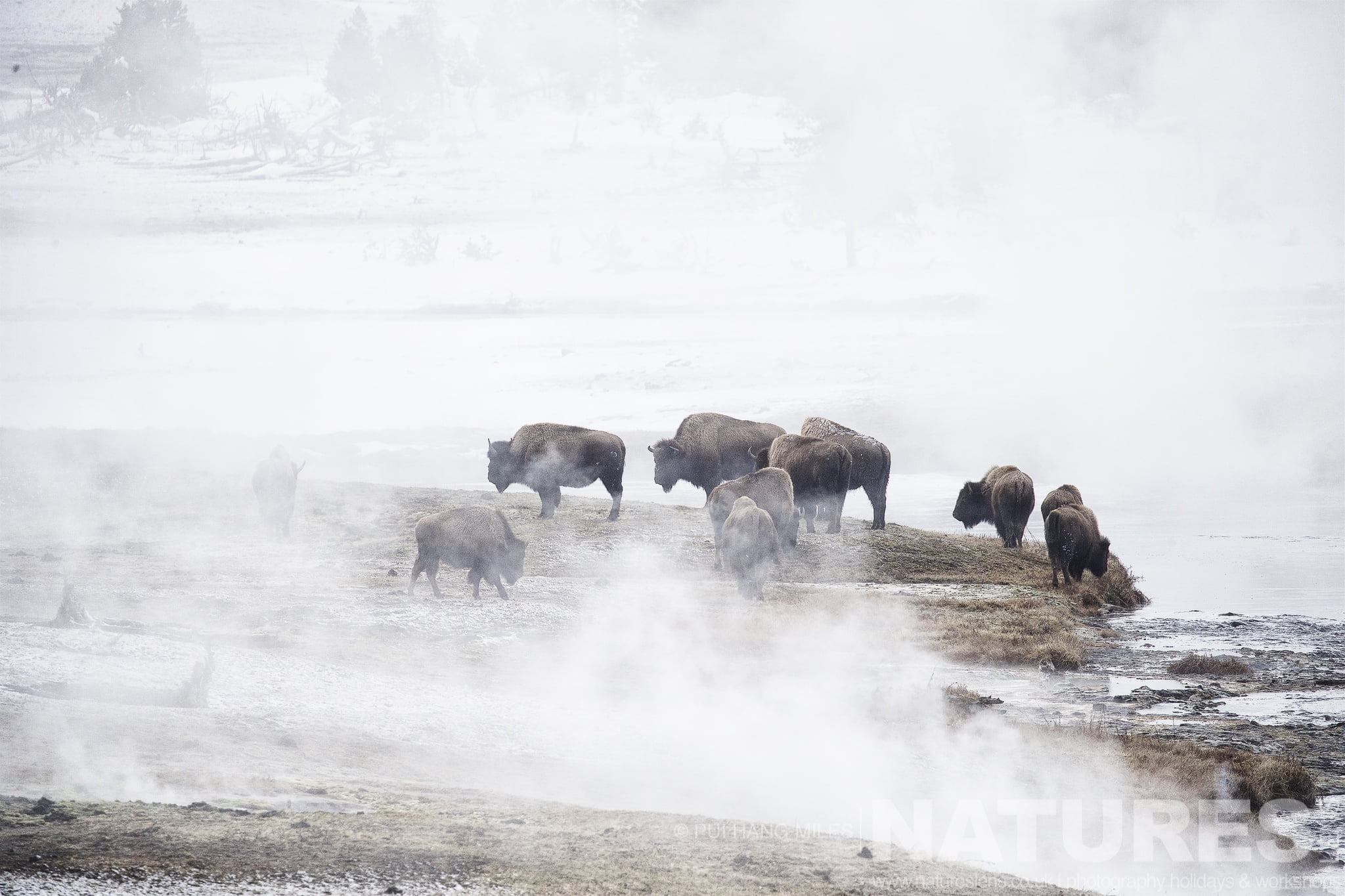
One of the key reasons to visit Yellowstone National Park in Winter is to observe the unique wildlife behaviour. Many species, such as bison, elk & antelope, use the thermal features in the park to keep warm & often congregate near natural hot springs. This makes them easier to spot & along with the coyotes, cougars, lynxes & badgers that call Yellowstone home, visitors can observe some incredible animals in their natural habitats.

Exploring the winter wonderland of Yellowstone National Park can be an unforgettable experience. With careful preparation & the knowledge that you will be rewarded by seeing some of the most amazing Yellowstone wildlife in Winter, visitors can look forward to an exhilarating adventure.
What species will be seen in Yellowstone during the Winter?
Winter in Yellowstone is a breathtaking experience. Millions of people flock to the park each year to witness the natural beauty of the snow-covered land & take in the spectacular views of the park's wildlife. Yellowstone is home to some of the most unique animals in the world & during Winter, visitors can discover a variety of species depending on the region of the park.
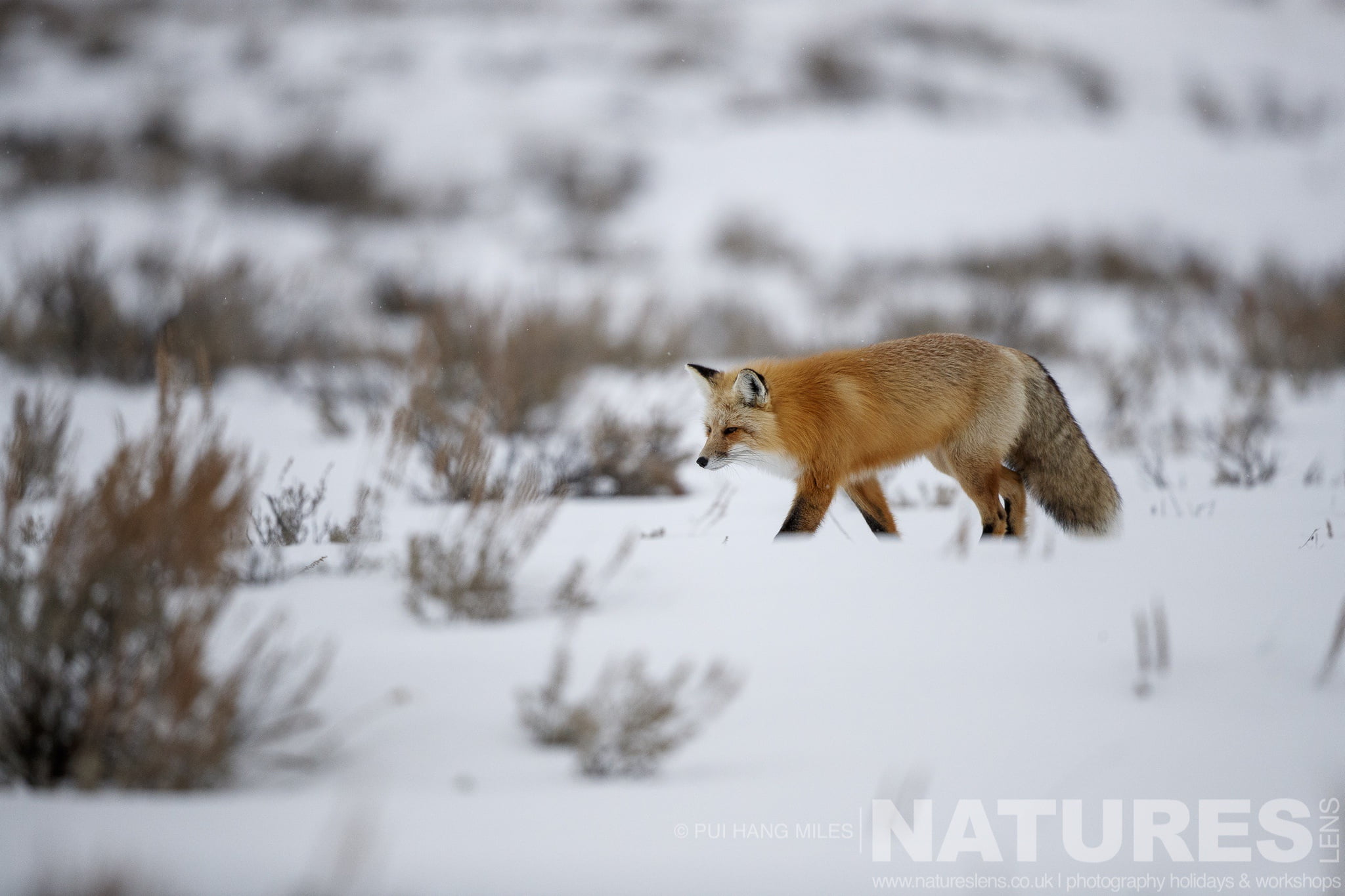
Wolf packs are one of Yellowstone's most iconic wildlife species during Winter. Wolves are often found in the snow-covered plateaus & the northern regions of the park. Though they are shy creatures & may seem elusive, those who venture into the deeper parts of the park have the chance to spot packs of wolves roaming through the forests in search of food.

Bison are also a common sight in Yellowstone during Winter. Bison usually appear in large herds near geyser basins & grassy areas as they feed on grasses & other plants. Visitors can observe them in the snow-covered plains & meadows, which provide shelter from the cold.
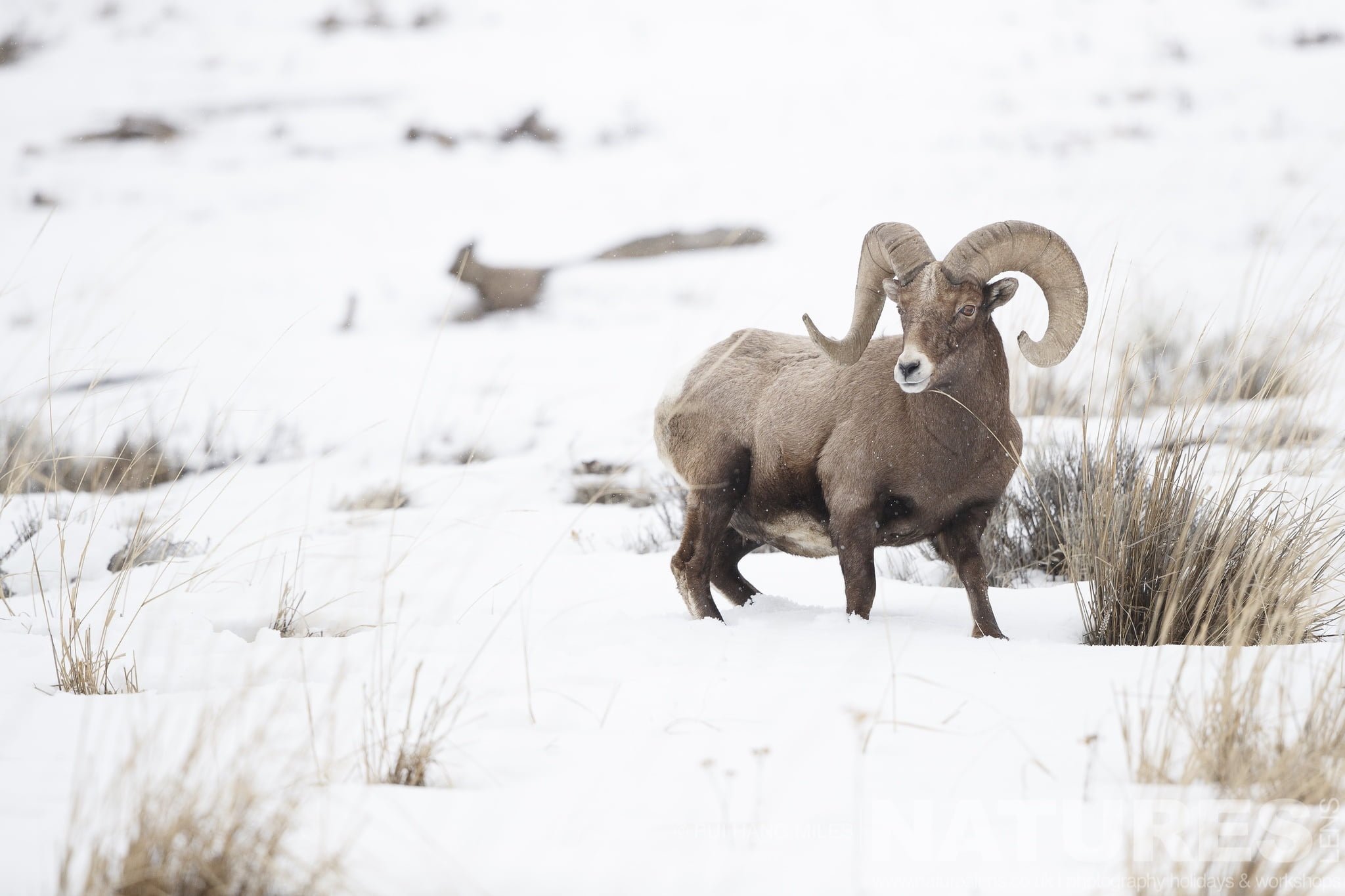
Elk are another species of Yellowstone winter wildlife; Elk tend to gather in larger groups than wolves or bison, & they are often spotted in the higher elevations of the park. Elk herds are usually led by a dominant male & female, & visitors can spot these large animals in the park's forested areas.

Mountain goats are also a unique species found in Yellowstone during Winter. These majestic animals are usually seen in the higher elevations of the park, where they can find food & water. Visitors can find herds of mountain goats grazing on the snow-covered rocky cliffs as winter sets in.
Bison & Elk in the Open Meadows of Yellowstone in Winter
Seeing the bison & elk in the open meadows of Yellowstone National Park in Winter can be fantastic. The deep snows of the park are beautiful & a sight to behold. But for the winter wildlife in Yellowstone, it can mean a struggle for survival.
Bison are incredibly well adapted to the cold winter temperatures in Yellowstone. Their heavy fur coats enable them to forage in the snow for food. During the winter months, they often congregate in open meadows that provide food & shelter from the winds. Bison are also known to form small herds in the winter months, which can be seen grazing in the open meadows of Yellowstone.

Elk also make use of the open meadows during the winter months. They, too, have thick coats & can dig through the snow in search of grasses, sagebrush, & other plants. Large herds of elk can be seen in Yellowstone's open meadows during the winter months.
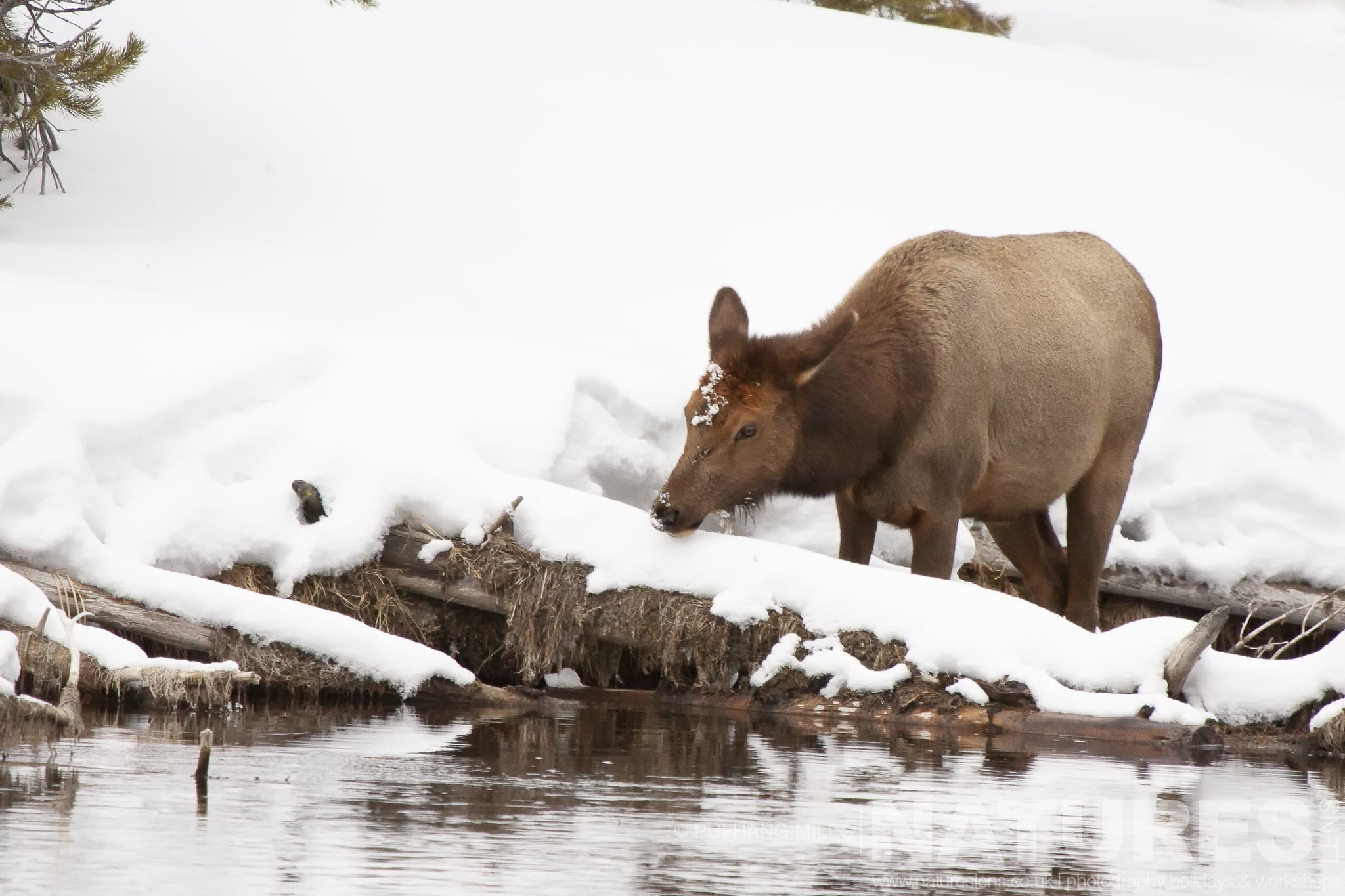
Despite their adaptations, Winter can be a difficult time for these animals. With deep snow & cold temperatures, they must work harder to find food, & can quickly become fatigued. To survive, they rely on the energy stored in their fat deposits & the ability to scurry in search of food.
Seeing bison & elk in the open meadows of Yellowstone during the winter months is a truly awe-inspiring sight. It's a reminder of how resilient these animals are & how they've survived in the harsh winter climate of Yellowstone National Park. Witnessing the Yellowstone wildlife in Winter should be experienced at least once in a lifetime.
Wolves are the main Predators of Yellowstone in Winter
Wolves are the main predator of the wildlife in Yellowstone National Park during the winter months. They are at the top of the park's food chain, & their population has been growing steadily since their reintroduction in 1995. Wolves hunt species such as elk, bison, & deer to survive. Yellowstone's wolves have adapted to the harsh winter conditions in the park & can often be seen traversing vast distances in search of food.

Winter is prime hunting time for wolves in the park. The snow makes it easier for them to track their prey, & the colder temperatures create an abundance of fresh snow for them to traverse. Wolves tend to hunt in packs, which allows them to bring down larger prey such as elk & bison. Their strong sense of smell also helps them locate potential meals even in the cold & dark of Winter.
Wolves are a keystone species in Yellowstone, & their presence has essential implications for the park's ecosystem. They help to keep the populations of large animals such as elk, deer, & bison in check. This helps to ensure that the food sources available to other species, such as bears & coyotes, are plentiful. It also helps maintain the balance between predators & prey in the park.
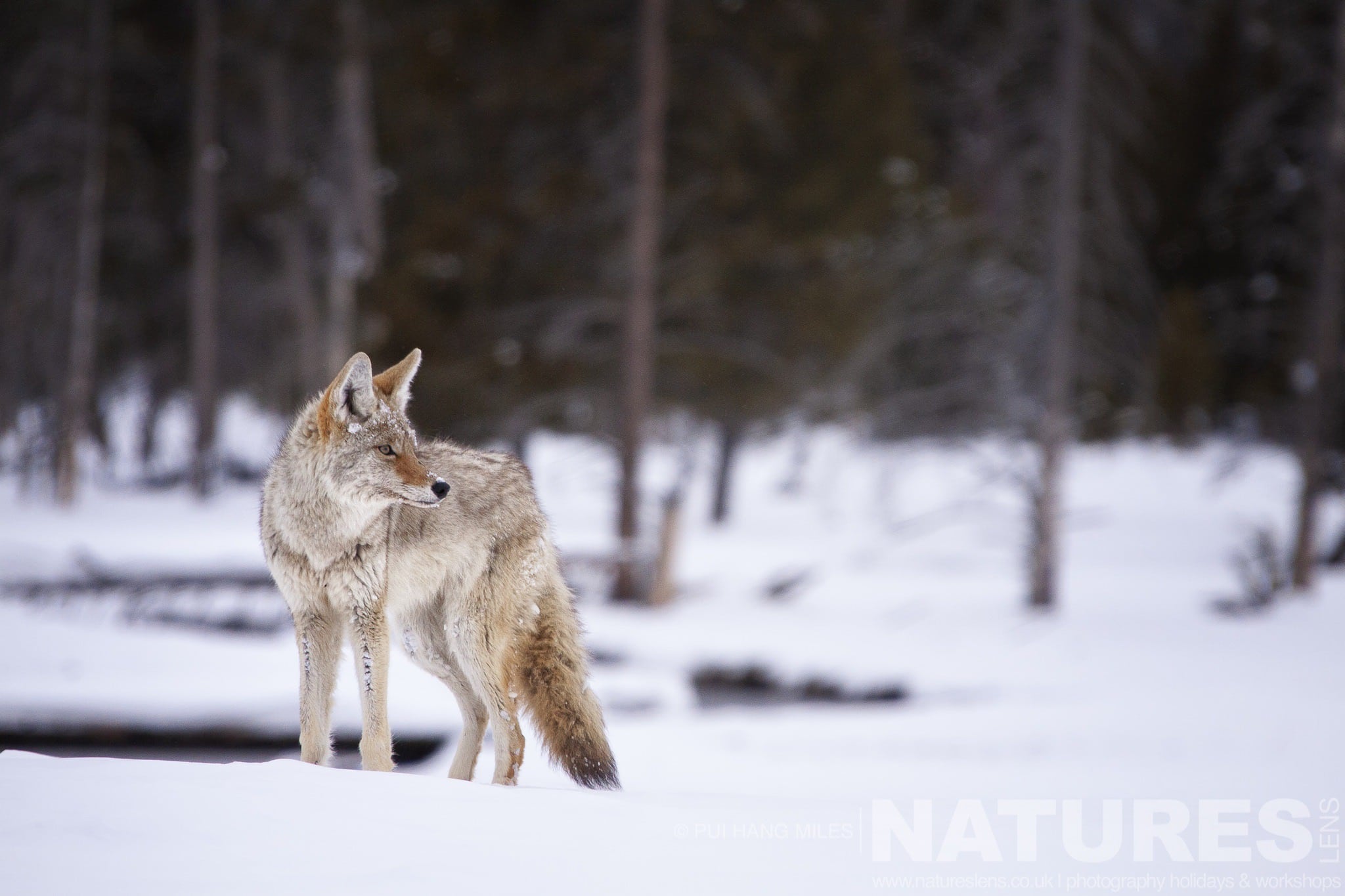
The reintroduction of wolves to Yellowstone has been a success, but much work remains to be done. Wolf conservation efforts must continue to balance the park's delicate ecosystems. As visitors to the park, remember to observe wolf behaviour from a safe distance & never approach a pack of wolves. By being mindful of the Yellowstone wildlife in Winter, you can do your part to help protect this notable species.
What about the geysers of Yellowstone?
The geysers of Yellowstone National Park are some of the park's most famous attractions. In Winter, these geysers become even more spectacular as the steaming hot water freezes & creates beautiful ice sculptures & other formations. Every year visitors flock to Yellowstone in the winter months to see the incredible sights & take in the magical atmosphere.
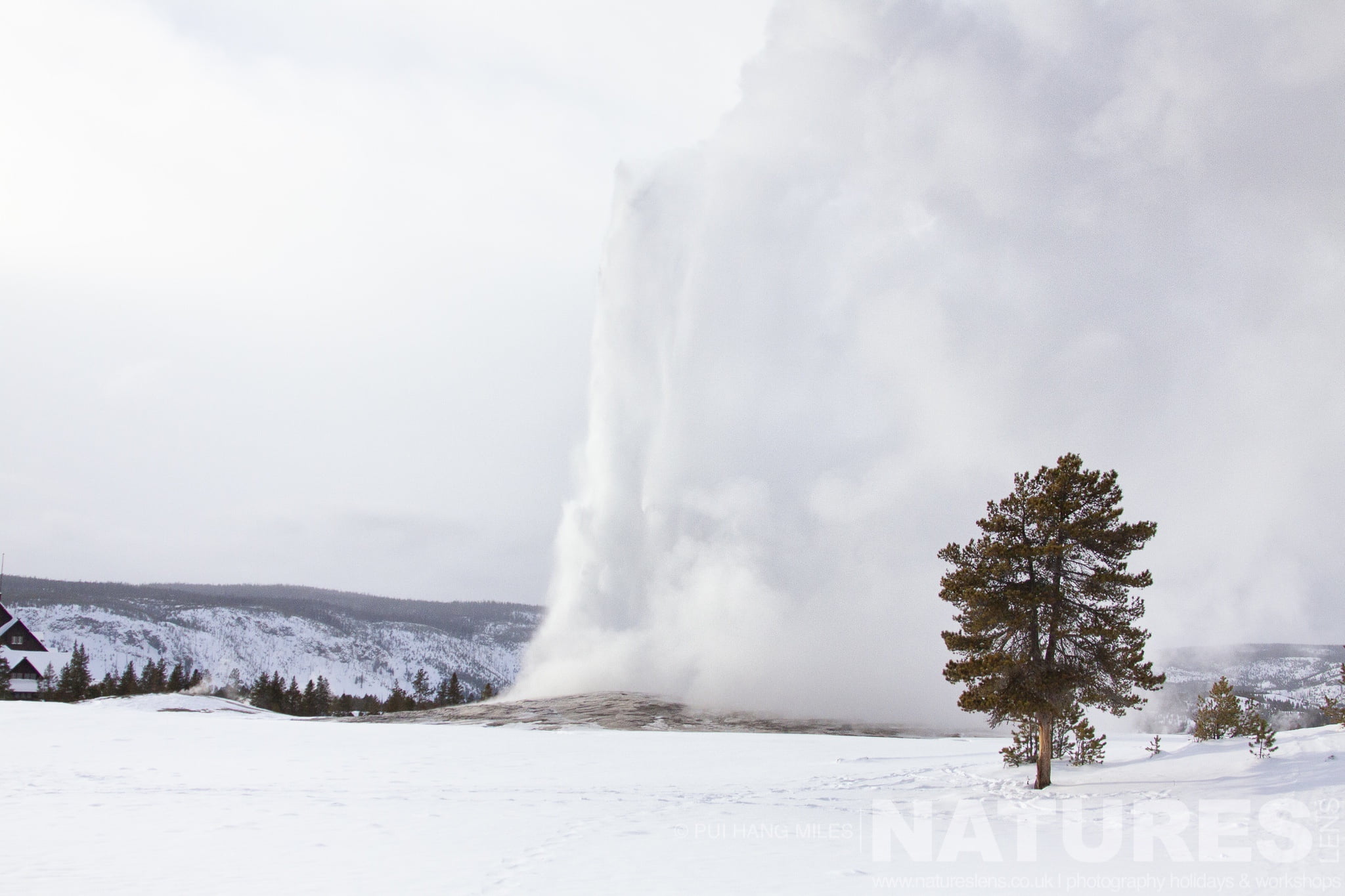
At Yellowstone, there are more than 10,000 thermal features, including 400 geysers. Of these geysers, the most famous & most visited is Old Faithful. This iconic geyser erupts on average about every 45 minutes & spouts hot water into the air for about 5 minutes. In Winter, a plume of steam rises in the cold air & the hot water creates stunning ice formations.

Many of the other geysers in the park also have their own unique & exciting characteristics. Some put on regular performances with predictable eruptions, while others are much more unpredictable. The geysers of Yellowstone are an essential part of the park's ecology & many species rely on the hot water for survival.
When you visit Yellowstone in the Winter, you can witness these incredible thermal features in all their icy glory.
From the majestic eruptions of Old Faithful to the more subtle geyser displays, you can appreciate the beauty & grandeur of nature.
Which Photography Tours Does NaturesLens Schedule for Photographing the Yellowstone winter wildlife?
NaturesLens schedules bi-annual visits to capture images of the winter wildlife of Yellowstone National Park; these itineraries are planned to enable photographers to join us on a winter adventure & to add pictures of the magnificent Yellowstone wildlife to their portfolio. These trips are generally conducted in February or March when the Wyoming wildlife is most active in Winter.
Our photography holidays allow photographers to capture stunning images of the headline winter species of Yellowstone National Park as well as many lesser Wyoming species. During our trips, photographers will also be able to photograph various other wildlife, including many birds & smaller mammals.
At NaturesLens, we aim to provide photographers with an unforgettable experience that will leave them with beautiful, memorable images. Our trips are led by experienced wildlife photographers who are passionate about wildlife photography & are dedicated to helping photographers capture the best images possible.

